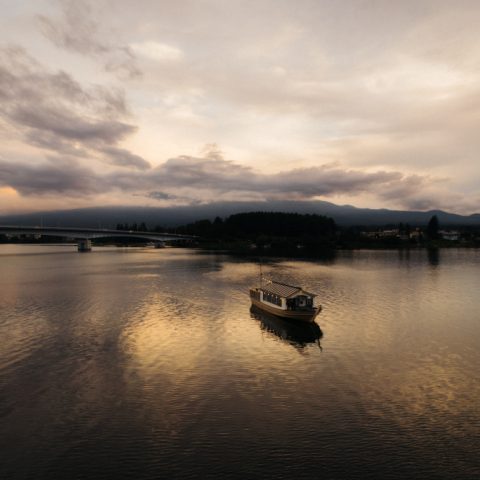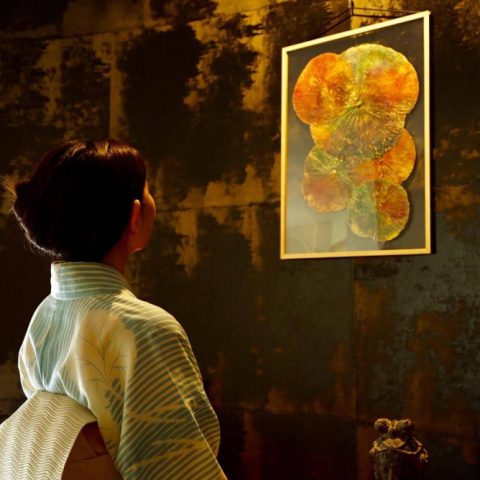
We are so thrilled to introduce today Martin, owner of “Eighty Degrees”, a beautifully crafted, independent magazine all about tea culture! We, at Arigato Travel, are really passionate about tea, being a huge part of Japanese Culture. And because we know a lot of our readers love it too, we want to introduce to you their amazing work! Let’s find out more.
Hi! Thank you for your time today! Before we go any further, can you please introduce yourself and some background on what you do for our avid readers?
My name is Martin Boháčik and I am the founder and editor of Eighty Degrees.
– an indie print magazine about tea. The idea of starting a tea magazine came from my curiosity about the immensely rich culture of tea as well as my appreciation for print media. At first, I came across a lot of skepticism, especially from ‘casual’ tea drinkers because tea is such an omnipresent beverage that most people don’t pay much attention to it.
For many it is just something they have always drunk, oftentimes as a remedy when ill, something their grandparents used to make for them when they were little. It might feel almost as if tea were so mundane that it doesn’t deserve a closer look to understand it.
But tea is a fascinating drink that comes with a great deal of historical and cultural impact. Some drink it casually as part of their morning routine, others go to great lengths to procure the most unique and sophisticated varieties. In some parts of the world, tea is the core of social interactions and formal rituals that span hours. Elsewhere, tea was used as a means of toppling governments and finding freedom from oppressive monarchies.

The name of your magazine is quite unique! Is there a story behind the name and what sort of impact did you intend for it to have? Can you share it with us?
Those who don’t know much about tea instantly assume that eighty degrees (Celsius) is the optimal temperature to brew tea. It’s not that simple, however, and there isn’t only one way of brewing it. Each tea type requires a different approach, different amount of tea leaves and water, and different temperatures. This is perhaps the most critical aspect one needs to understand to appreciate tea. Most tea drinkers don’t know this and as a result don’t get the most out of their brew.
So, naming the magazine ‘Eighty Degrees’ is meant to be a conversation opener, it’s meant to make people stop and think about it, which inevitably leads to questions and learning.
Taken from your website “A magazine for dreamers… about tea.”; what a captivating and bold statement! Can you describe what inspired you to go into such a project in creating lovely magazines as these?
I had a very specific vision for the magazine when I was starting it. I wanted to create something pleasing not only to the eye, but also to the touch. It’s printed on a thick, uncoated paper which gives it a sense of luxury one can’t find with traditional ‘soft’ periodicals. A lot of thought always goes into the cover of each issue to incorporate aspects of the inside conceptually, visually, and tactilely. The articles in each issue are in the form of long reads, spanning some 10 pages each with high quality photos and illustrations. It is much easier to read a long article offline — on paper — as there are no distractions and no notifications to break our focus.
What is the creative process like to produce amazing content for your magazine? Do you have a task force of creative writers or is it solely your own work?
The magazine is still done by a team of one, that is I decide the content, I source articles and visuals from contributors, and I put it all together for printing. Plus, all the unglamourous works on the business side of running a magazine. Of course, I work with many wonderful writers, illustrators and photographers who share their work with the magazine and without whom it would not be possible to create it.

Oftentimes people ask why I study so many languages, and my one answer will be “languages break barriers!” So I have to ask, are your magazines published in different languages for your readers worldwide? If not, any future plans on doing so and which would be the first language it would be printed in besides English?
I very much agree with the statement and speaking several languages has helped me in the process of building the magazine and sourcing content. In terms of production, however, Eighty Degrees only comes out in English (for now!). After all, English is a universal language and it’s important to nail it in this form first before exploring other versions.
The world keeps on advancing in technology where many items are now accessible by using a device. I’m not really a fan of soft copy materials as owning my very own copy stays forever in my heart. So it leaves us to wonder, what is one unique trait you would like to point out to our readers on why they should purchase your magazines?
Indeed, having something physical in your hands changes our relationship with the object. Digital things are disposable, forgettable, and hard to focus on. We are restricted to the features of a particular device on which we view it, from brightness to screen resolution to other technical aspects. It’s practical, certainly, but it cannot replace the feeling of holding an object in one’s hand and seeing it exactly as it was designed.
I am very glad to say that not only tea lovers appreciate the magazine, but also those who are interested in design and a specific type of aesthetics. Besides, although the magazine is about tea, it rarely talks about tea itself – it focuses mainly on the people behind it, the rituals and utensils that accompany it, and its rich and incredible history.

Our team here at Arigato Travel has lots of tea lovers! For myself personally, I have a great liking for Earl Grey tea, but also a big fan of Matcha! Hence, we are curious to know what is your favourite tea? Is there one you like best for a calm afternoon and one you love to have when you want to brighten your spirits?
I can’t say I have specific teas for a calm afternoon or to brighten my spirits. There are too many varieties of incredibly different flavours and aromas to pick just one. I have tried many, but there are still more to discover, and I like anything that is unique, unusual, or something that is fairly common but done in a way that elevates it beyond the obvious.
Thanks to the magazine, I have learnt to appreciate Japanese sencha and Chinese pu’er. Before, I couldn’t stand either, but I have understood that I was a victim of bad quality leaves and inadequate brewing methods. Once I knew how to choose better leaves and how to brew them correctly, it opened a whole world of wonderful flavours!
We are also quite curious to know what is your favourite Japanese food and why? And what tea pairings do you like?
That’s another very hard question! I have had a lot of Japanese food in the West, but I do appreciate that I cannot make judgements based on such a limited experience. I have also visited Japan a couple of times and it was clear that I hadn’t really understood Japanese food.
Fortunately, I rarely shy away from ‘novelty’ foods, so I am happy to try anything. While our Western palates mostly think of sushi, I do love ramen and okonomiyaki, for example.
However, just like with tea, there are numerous variations of each of these dishes and I wouldn’t want to trivialise them through my limited experience. The pairing of foods with teas is quite a subjective endeavour as we all perceive flavours differently, but simplistically put, I would never say no to dark chocolate with high-quality white jasmine tea!

Thank you once again for your time! It was truly a pleasure to learn more from you! Is there anything else you would like to say or a special message to our readers?
Whether you like tea or don’t care for it much, I wish more people would look at it with the respect it deserves. The process of growing to processing and getting it to your table is a long and complex one, affecting numerous lives throughout the chain.
Growers have been perfecting their methods across generations to achieve the most wonderful flavours, which can be unlocked just with a little bit of water – but only if we pay enough attention to it.
Don’t just order a green tea from a tea bag at a restaurant where tea is just a footnote alternative to coffee and say: “I have tried it and I don’t like it”. There is so much more to it!
Follow Eighty degrees on:
- Website: readeighty.com
- Twitter: @readeighty
- Instagram: @readeighty
Join us for a one-hour online experience to learn more about Japanese green tea with a local expert!



